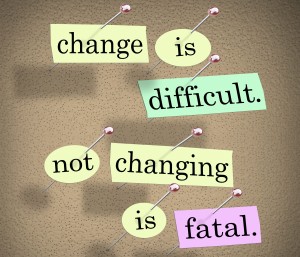#CareerAdvice : #JobSearch -The Best #JobSearchAdvice from Top CEOs at GM, 23andMe, Hilton & More… Best of FSC Blog! Great Read.
There’s no doubt about it: the job search is tough. You have to spend time and energy revamping your resume, writing cover letters and practicing for interviews, and even then, you’re not guaranteed a position. The good news, though, is that you get a little bit savvier at every step. With each interview needed to get to the next level, you get better at marketing yourself, communicating confidently and reflecting on your experiences thus far. So by the time you’re at the top of the company ladder, you’re practically an expert at what it takes to get a job.
With this in mind, we chatted with and researched the best job search advice from the Top CEOs of 2018. If your job search strategy hasn’t been working out so far, one of these tips might just do the trick.
1. Find a Mentor
It’s a well-known fact that personal connections are one of the most effective ways to find a job. If you develop a strong relationship with an industry mentor, they’re often able to connect you to people, companies and opportunities that can advance your career. Even if they can’t directly hook you up with a job, though, they can serve as a fantastic reference who can speak to your work ethic and personal character. But make sure you choose the right one, advises Mary Barra, CEO of General Motors.
“There are mentors in the workspace all around you — peers, the seasoned professional, your supervisor, the supervisor one desk over,” Barra said in an interview with the Women@Work podcast. “People often reach out [fusion_builder_container hundred_percent=”yes” overflow=”visible”][fusion_builder_row][fusion_builder_column type=”1_1″ background_position=”left top” background_color=”” border_size=”” border_color=”” border_style=”solid” spacing=”yes” background_image=”” background_repeat=”no-repeat” padding=”” margin_top=”0px” margin_bottom=”0px” class=”” id=”” animation_type=”” animation_speed=”0.3″ animation_direction=”left” hide_on_mobile=”no” center_content=”no” min_height=”none”][to me] saying, ‘Will you be my mentor?’ And I say, ‘Let’s talk about that, because the better person to be your mentor in the organization is someone who sees you every day, someone who knows you at your best, and someone who can give you opportunities to improve.’ So I always redirect them: Find mentors in the people around you who you respect.”
Like this Article ? Share It ! You now can easily enjoy/follow/share Today our Award Winning Articles/Blogs with Now Over 2.5 Million Growing Participates Worldwide in our various Social Media formats below:
FSC LinkedIn Network: www.linkedin.com/in/fscnetwork
Facebook: http://www.facebook.com/pages/First-Sun-Consulting-LLC-Outplacement-Services/213542315355343?sk=wall
Google+: https://plus.google.com/115673713231115398101/posts?hl=en
Twitter: Follow us @ firstsunllc
Question: Want the ‘the best/current articles/blogs on the web’ on Job Search, Resume, Advancing/Changing your Career, or simply Managing People?
Answer: Simply go to our FSC Career Blog below & type(#career, #leadership, #life) in Blog Search: https://www.firstsun.com/fsc-career-blog/
What Skill Sets do You have to be ‘Sharpened’ ?
Continue of article:
2. Try a Little Bit of Everything While You Still Can
When you’re just beginning your career, you might not know for sure what you want to do yet. And really, that’s okay. You don’t have to go looking for your dream job right away. In fact, trying out many different fields can be an asset, believes Anne Wojcicki, CEO of 23andMe. Not only does this make you more marketable in the future — the more skills you have, the more doors open for you — but you’ll also have a better chance of identifying what you really love doing.
“Enjoy the uncertainty and the adventure of figuring out the world and what you want to do. 20-year-olds can get away with adventure and exploration in a way 40+-year-olds can not. So enjoy asking all the questions and trying all the different jobs and realize that each new experience helps shape your views of the world and what you want to do in it,” Wojcicki said in an interview with Glassdoor.
3. Give Lesser-Known Companies a Chance
If you’re only applying to Fortune 500 companies or tech titans, don’t get discouraged when you don’t hear back. The name recognition and prestige of these companies lead to hundreds, thousands or even millions of candidates applying to them — Google, for example, sees about two million applicants each year — so your odds may be better if you explore more under-the-radar companies. You’ll also gain exposure to multiple roles at smaller companies, helping you discover what you enjoy doing and increase your skill stack.
“My suggestion is to visit the websites of the top-tier [venture capital firms] and click through their portfolio companies, and apply to a few that seem especially interesting,” Sanjit Biswas, CEO of Samsara, told Glassdoor. “High-growth tech companies are a great place to accelerate career growth — you’ll get to see decisions up close, and the short feedback loops are some of the best ways to learn what works and what doesn’t.”
4. Show You’re a Team Player
It’s hard to think of any job nowadays that doesn’t require some degree of teamwork, and because of this, companies expect candidates to be adept collaborators. Lean into the opportunities you have to work with others at your current job, Hilton CEO Chris Nassetta advises.
“Make sure that you contribute in every way that you can, and really become a team player. Nothing gets done in today’s world without a village, so to speak. While we all make individual contributions, ultimately it’s about how you as a component, particularly as you’re getting started, work with other people,” Nassetta shared with Glassdoor. Employers want to see “ways where obviously you’re contributing and you’re creating significant value, but you’re doing it as a member of a team and not just as an individual contributor.”
Learning to work well with others, and then drawing on these experiences in your cover letter or when answering behavioral interview questions like “Tell me how you handled a difficult situation” or “What are some of your leadership experiences?” can really make you stand out to recruiters.
5. Follow Your Passion
You may not end up in your ideal job right away, but when you’re thinking of settling down at a job or company for the long haul, make sure that it’s one you’re passionate about. For one, we spend about a third of our waking lives at work, so it’s worth spending that time doing something you enjoy. But for another reason, you simply tend to be better at what you do when you find a job you’re passionate about.
“My #1 job tip is to look for a job that you want to do. We spend a lot of time at work, and it’s important that we enjoy what we’re doing. We only go around once, and we’ve got to keep that in perspective,” said Bernard J. Tyson, Chairman and CEO of Kaiser Permanente, in an interview with Glassdoor. “Nothing is promised to any of us [at] the end of the day. The key to that is to be in step with the culture of the organization where you work.”
See Open Jobs at Kaiser Permanente
6. Consider Alternate Paths
Following your passion, though, doesn’t always mean rigidly clinging onto one idea of The Perfect Job — there are often multiple ways to explore the fields you’re most passionate about, Michael Mahoney, CEO of Boston Scientific, explained to Glassdoor.
“I knew from a young age that I wanted to get into healthcare. I was inspired by my grandpa who was a pediatric cardiac surgeon. I grew up admiring how he helped so many children. I remember sneaking into his library when I was a kid. I’d sit in his chair surrounded by all his medical books and dream about being a doctor,” Mahoney shared. “After earning a solid C- in organic chemistry, I elected to change course and approach healthcare a little differently. It was a great lesson for me.”
Rather than pursuing a different field entirely, Mahoney chose to go into the business side of healthcare — and his decision paid off. Today, Mahoney oversees an organization of 29,000 that helps create lifesaving medical devices.
See Open Jobs at Boston Scientific
7. Do Your Research
We’ve said it before and we’ll say it again: recruiters want informed candidates, the kind of people who look up a company beforehand and gather information on its culture, products, business model and more. Because by researching a company, you don’t just show that you’re knowledgeable about it — you also show that you care about and believe in it.
Brian Halligan, CEO of HubSpot, mentioned in an interview with Glassdoor that his company specifically looks for candidates who have taken it upon themselves to learn about his company and its products.
“One tip I’d give all applicants is to review HubSpot’s culture code before interviewing and to use the software — we give tons of it away for free,” Halligan said.
8. Take Risks
Whether you’re on the fence about applying to a position you’re slightly underqualified for or reaching out to a coworker you haven’t spoken with in years for an informational interview, don’t let a fear of failure hold you back.
“The biggest risk is not taking any risk,” said Facebook CEO Mark Zuckerberg in a 2011 interview. “In a world that’s changing really quickly, the only strategy that is guaranteed to fail is not taking risks.”
Sure, there’s no guarantee that any one particular risk will pay off — but if you keep swinging big, you’re bound to reap the rewards eventually.
GlassDoor.com | |
[/fusion_builder_column][/fusion_builder_row][/fusion_builder_container]




